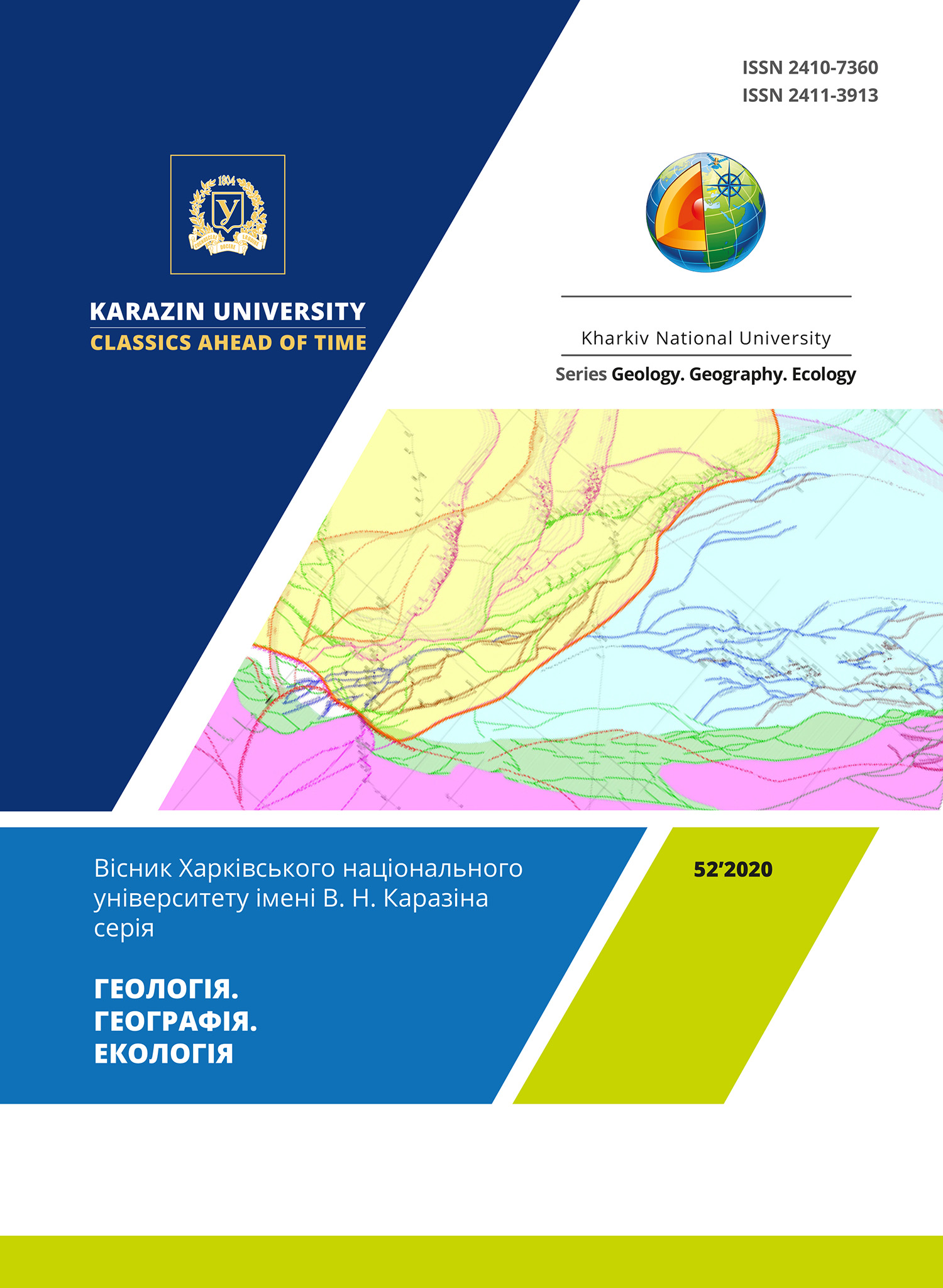Space-temporary variability of the winter minimum monthly runoff in the rivers of lake Sevan basin (Armenia)
Abstract
Formulation of the problem. The paper considers spatial-temporary variability of the winter minimum monthly flow rates of the rivers in the basin of Lake Sevan, as well as air temperature and atmospheric precipitation of the basin. The values of hydrological and statistical characteristics of the winter minimum monthly expenditure have been calculated.
Purpose of the work is: to analyze and evaluate the patterns of temporal and spatial changes in the winter minimum monthly water discharge in a number of long-term observations for rivers that flow into Lake Sevan.
Methods. The study is based on observation data from 12 hydrological posts of the “Service for Hydrometeorology and Active Impact on Atmospheric Phenomena” of the Ministry of Emergencies of the Republic of Armenia. The following methods were used for this purpose: mathematical-statistical, extrapolation, interpolation, analysis, analogy, correlation.
Results. Minimum runoff is one of the main characteristics to be considered when designing hydraulic structures. Duration of winter low-water period is approximately 3-4–5 months on the rivers of the studied territory. It is established from late November – December to February – March. Minimum consumption is mainly found in January-February. However, in some years it is possible in November or March.
Based on physical and geographical features of the area, the monthly winter minimum flow rates of the rivers of the Lake Sevan basin are characterized by uneven spatial distribution. Winter monthly minimum consumption ranges widely from 0.015 to 1.68 m3/s.
Close correlations between the winter minimum monthly and the average runoff of the winter period and between the winter average minimum monthly runoff and the average annual runoff were also obtained. These relations can be used to obtain the winter minimum monthly consumption of unexplored and little studied rivers of the territory under discussion for a calendar year. A close relationship between them indicates that depending on the low minimum monthly runoff, the average runoff during the winter period is just as low, and vice versa.
In the study area, there is a regular increase in the minimum runoff with an increase in catchment areas, as well as with an increase in the weighted average height of the catchment.
The variation coefficient of winter minimum monthly consumption is 0.15–0.60 on the territory of the Lake Sevan basin and the asymmetry coefficient is from -0.64 to 1.77. As a rule, there is a regular decrease in the minimum runoff with an increase in catchment areas. The correlation directly proportional relationship has been obtained between the coefficients values of variation and asymmetry of the winter average minimum monthly flow.
There is a tendency to an increase in winter average decade decimal consumption in most rivers flowing into Lake Sevan (7 out of 12 studied posts, that is, in 58% of cases) and an increase in air temperatures and precipitation at all currently operating meteorological stations in the basin.
Downloads
References
Beysembaeva M.A. et al. (2016). Minimum flow of the upper irtysh river in the basin flat part in the republic of kazakhstan under anthropogenic impact. Bulletin of the Tomsk Polytechnic University. Geo Аssets Engineering. 327, 4, 35–43. [in Russian].
Bolgov M. V., Korobkina E. A., Trubeckova M. D., Filimonova M. K., Filippova I. A. (2014). Modern changes in the minimum runoff in the rivers of the basin of the river Volga. Meteorology and hydrology, 3, 75-84. [in Russian].
Vardanian T.G. (1991). The minimal flow of the river Argidji in winter and the methods of its calculation. Proceedings of the YSU, Series Geology and Geography, 2, 150-156. [in Armenian].
Volchek A.A., Gryadinova O.I. (2010). Minimum runoff of the rivers of Belarus: monography. A.S. Pushkin Brest. state University. Brest: BrSU, 169. [in Russian].
Gurevich E.V. (2009). Air Temperature Influence on the Winter River Runoff (Case Study of the Aldan River Basin). Meteorology and hydrology, 9, 92-99. [in Russian].
Margaryan V.G., Davtyan T.M., Amroyan A.M., Churshudyan S.A., Sargsyan K.G., Matevosyan V.A. (2018). Analysis and assessment of changes in the winter minimum mean decadal water flow in the tributaries of lake Sevan. Contemporary issues of geography and geology. Dedicated to the 100th Anniversary of the Yerevan State University, International Conference Proceedings September 27-29, 2018, Yerevan. YSU, 242-246. [in Armenian].
Muradyan Z.Z. (2014). Calculations and risk աssessment of the եxtreme օutcomes of the ռivers of the Araks Basin of the RA. Thesis for the degree of candidate of geographical sciences. Yerevan, 32. [in Armenian].
Surface water resources of the USSR, Volume 9, the Araks River basin, Issue 2. L.: Gidrometeoizdat. [in Russian].
Filippova I.A. (2014). The minimum flow of rivers in the European part of Russia and its assessment in the context of climate change. Candidate’s thesis. Moscow, 210. [in Russian].
Shaginyan M.V., Mnatsakanyan B.P. (1982). About the possibility of forecasting low-flow runoff through the groundwater levels. Collected Works of the Yerevan GMO, 4, 36-39. [in Russian].
Khilchevsky V.K., Romas І.М., Romas M.I., Grebin V.V., Shevchuk I.O., Chunarev O.V. (2007). Hydro-hydrochemical characteristic of the minimum runoff of rivers the Dnipro basin. K.: Nika-Center, 184. [in Ukrainian].
Frolova N.L., Belyakova P.A., Grigor’ev V.Yu., Sazonov A.A., and Zotov L.V. (2017). Many-year variations of river runoff in the selenga basin. Water Resources and the Regime of Water Bodies, 44, 3, 359–371. https://doi.org/10.1134/S0097807817030101
Rets E.P., Dzhamalov R.G., Kireeva M.B., Frolova N.L., Durmanov I.N., Telegina A.A., Telegina E.A., Grigoriev V.Y. (2018). Recent trends of river runoff in the North Caucasus. Geography, environment, sustainability, 11(3), 61-70.
Telegina E.A. (2015). Spatial and temporal variations of winter discharge under climate change: Case study of rivers in European Russia. Remote Sensing and GIS for Hydrology and Water Resources (IAHS Publ. 368, 2015) (Proceedings RSHS14 and ICGRHWE14, Guangzhou, China, August 2014), 245-250. https://doi.org/10.5194/piahs-368-245-2015





